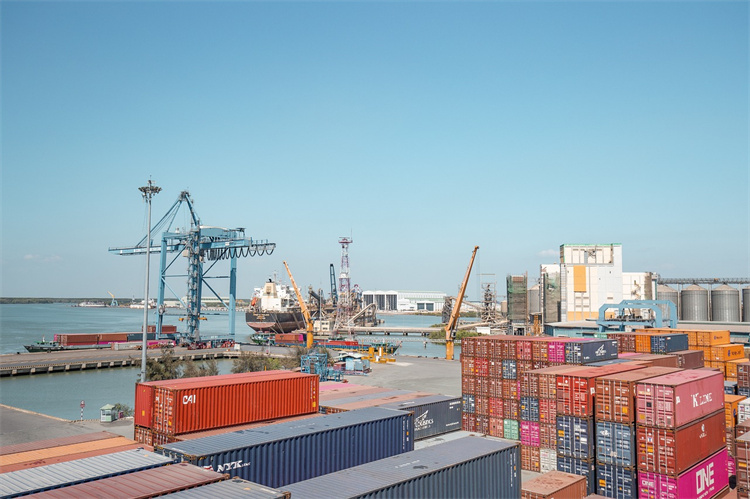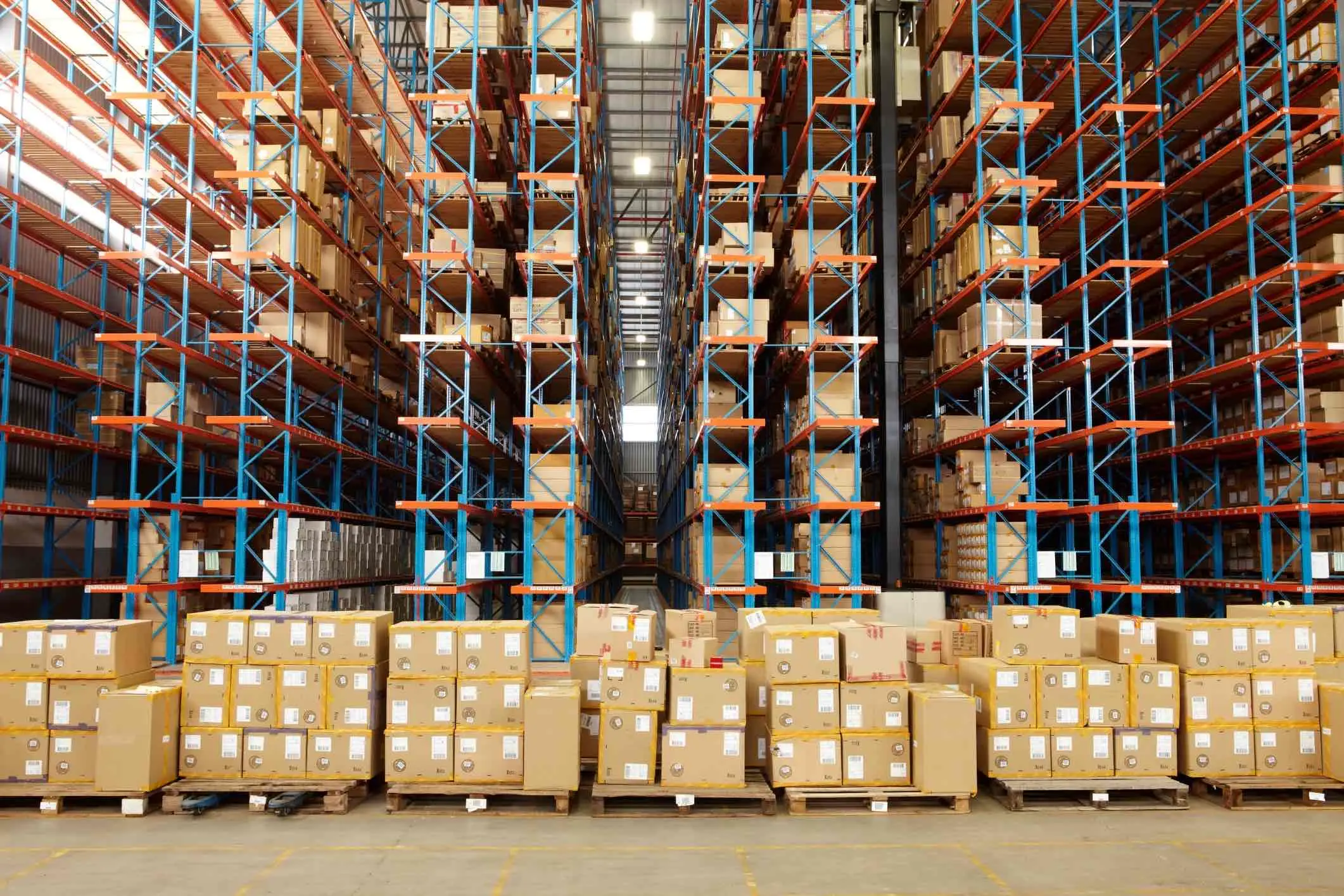China Europe Railway Boosts Global Trade Efficiency

The china europe railway has revolutionized global trade by linking 224 cities in China with 25 European countries. This extensive rail network enables the seamless movement of goods across continents, providing a quicker and more economical alternative to conventional sea and air freight. With over 17,000 train trips each year, it has emerged as a crucial logistics solution for businesses. Recent developments in the railway, including expanded routes and improved digital tracking, have further optimized freight transport, ensuring dependable and efficient trade between Asia and Europe.
Key Takeaways
The China-Europe Railway connects 224 cities in China with 25 European countries, providing a fast and economical alternative to sea and air freight.
With over 17,000 train trips annually, the railway significantly reduces transit times to just 15-20 days, making it ideal for time-sensitive goods.
Rail freight is a cost-effective option, being about one-fifth the cost of air transport, allowing businesses to optimize logistics expenses.
The railway promotes sustainability by producing lower carbon emissions compared to other transport modes, aligning with the growing demand for greener practices.
JUSDA enhances the China-Europe Railway's efficiency through seamless customs operations and real-time tracking, ensuring reliable delivery of goods.
Understanding and navigating geopolitical and regulatory challenges is crucial for maintaining smooth operations along the railway.
Future expansions and technological advancements, including AI and IoT integration, will further improve the railway's operational efficiency and resilience.
Overview of the China-Europe Railway Express

Key Routes and Destinations
The china europe railway connects major cities in China to prominent European hubs. Key routes include connections to Duisburg, Hamburg, and Madrid. These cities serve as vital gateways for goods entering and leaving Europe. Duisburg, often referred to as the "world's largest inland port," plays a central role in facilitating trade. Hamburg, with its strategic location, strengthens the railway's reach into Northern Europe. Madrid, as a significant hub in Southern Europe, ensures efficient distribution across the region.
The railway's expansion into Central and Eastern Europe has further enhanced its connectivity. Countries like Poland, Hungary, and the Czech Republic now benefit from direct rail links. This development has opened new opportunities for businesses in these regions, enabling faster and more reliable trade routes. The extended network ensures that even smaller markets can access global supply chains with ease.
"The China-Europe Railway Express has been instrumental in providing a reliable alternative to maritime transport, particularly during global supply chain disruptions."
Volume of Trade and Operational Statistics
The china europe railway has witnessed remarkable growth in trade volumes. In 2023, it transported approximately 1.9 million TEUs (twenty-foot equivalent units), showcasing its capacity to handle large-scale freight. This achievement highlights the railway's ability to meet the growing demand for efficient logistics solutions. The increase in container volumes reflects its importance in stabilizing global supply chains.
The number of train trips has also seen a significant rise. From just 1,702 trips in 2016, the railway now operates over 17,000 trips annually. This consistent growth demonstrates its reliability and efficiency as a transportation mode. Businesses increasingly rely on this service for its balance of speed and cost-effectiveness. Compared to sea freight, the railway offers faster transit times, making it ideal for time-sensitive goods. At the same time, it provides a more economical option than air transport, ensuring affordability for companies.
The china europe railway not only supports trade between Asia and Europe but also promotes sustainability. Its environmentally friendly approach reduces carbon emissions, making it a preferred choice for businesses aiming to adopt greener practices.
Benefits to Global Trade Efficiency

Reduced Transit Times Compared to Sea Freight
The china europe railway offers a significant advantage in transit times. While sea freight often takes several weeks, rail freight reduces this to just 15-20 days. This speed makes it an ideal choice for businesses handling time-sensitive goods. Industries such as electronics, clothing, and medical supplies benefit greatly from this efficiency. For example, medical supplies that require timely delivery can reach their destinations faster, ensuring critical needs are met without delay.
"Rail freight significantly cuts transit time compared to sea freight, making it a preferred option for businesses requiring speed and reliability."
The railway's ability to deliver goods quickly also helps you maintain a competitive edge. Faster transit times mean quicker inventory replenishment, enabling you to meet customer demands more effectively. This efficiency ensures that your supply chain remains agile and responsive to market changes.
Cost-Effectiveness and Environmental Benefits
The china europe railway strikes a balance between cost and speed. Rail freight is generally cheaper than air transport, offering substantial savings for businesses. For instance, the cost of rail freight is about one-fifth of air freight, making it a practical option for companies looking to optimize their logistics expenses. This affordability allows you to allocate resources more efficiently while still benefiting from faster delivery times compared to sea freight.
In addition to cost savings, the railway promotes sustainability. Rail freight produces significantly lower carbon emissions than air or sea transport. By choosing this mode of transportation, you contribute to reducing your environmental footprint. This aligns with the growing demand for greener practices in global trade. The railway's eco-friendly approach not only supports sustainability but also enhances your brand's reputation as a responsible business.
Key Benefits of Rail Freight:
Faster transit times (15-20 days) compared to sea freight.
Cost-effective alternative to air transport.
Lower carbon emissions, supporting sustainable logistics.
The china europe railway empowers you to achieve both economic and environmental goals. Its combination of speed, affordability, and sustainability makes it a vital component of modern supply chains.
JUSDA’s Role in Enhancing the China-Europe Railway
JUSDA’s China-Europe Express Rail Service
JUSDA plays a pivotal role in optimizing the china europe railway by offering a service tailored to meet the needs of modern businesses. The service ensures seamless customs operations, eliminating delays and complexities that often arise during cross-border trade. You can rely on JUSDA’s expertise to streamline the movement of goods, ensuring that your shipments reach their destinations without unnecessary interruptions.
The company’s intermodal solutions further enhance the efficiency of the china europe railway. By integrating multiple transportation modes, such as rail and road, JUSDA ensures that goods are delivered directly to their final destinations. This approach minimizes handling and reduces transit times, making your supply chain more agile and responsive.
JUSDA focuses on industries that demand precision and reliability. If you operate in sectors like electronics, FMCG, or automotive, you will benefit from specialized logistics solutions designed to meet your unique requirements. For example, the electronics industry often requires time-sensitive deliveries, and JUSDA’s rail service ensures that these needs are met with speed and accuracy. Similarly, FMCG and automotive businesses can depend on JUSDA to maintain consistent supply chains, even during peak demand periods.
JUSDA’s Innovations in Supply Chain Management
JUSDA leads the way in supply chain innovation by integrating advanced technologies into its operations. The JusLink intelligent supply chain platform provides real-time tracking, giving you complete visibility over your shipments. This transparency allows you to monitor the progress of your goods at every stage, ensuring that you stay informed and in control. With JusLink, you can make data-driven decisions that enhance the efficiency of your logistics processes.
The company also expands the capabilities of the china europe railway through sea-rail intermodal solutions. This innovation connects goods from regions like Japan, South Korea, and Taiwan to Europe via Chinese railway channels. By leveraging this broader connectivity, you can access new markets and optimize your supply chain across multiple regions. JUSDA’s sea-rail solutions ensure that your goods move seamlessly between different transportation modes, reducing transit times and costs.
JUSDA’s global network and multimodal logistics capabilities set it apart as a leader in supply chain management. The company’s strategic partnerships and commitment to innovation ensure that you receive end-to-end solutions tailored to your business needs. Whether you require efficient customs operations, real-time tracking, or expanded connectivity, JUSDA delivers the tools and expertise to enhance your supply chain.
Challenges and Limitations
Geopolitical and Regulatory Hurdles
Cross-border customs inconsistencies create significant obstacles for the smooth operation of the china europe railway. Each country along the railway corridor enforces its own rules, documentation requirements, and data standards. These fragmented practices disrupt the seamless movement of goods. You may face delays when navigating these varying regulations, which can slow down your supply chain and increase operational costs.
Political tensions between nations also impact the railway's efficiency. Shifts in global trade policies often lead to sudden changes in tariffs or restrictions. These changes can affect your ability to plan shipments effectively. For instance, disputes between trading partners may result in stricter customs checks or even temporary route closures. Staying informed about geopolitical developments becomes essential for mitigating risks and ensuring uninterrupted trade.
"Fragmentation poses a challenge to seamless transportation of goods due to different rules, documentation, and data requirements imposed by countries along the corridors."
To overcome these hurdles, you should consider working with logistics providers experienced in cross-border operations. Companies like JUSDA specialize in navigating complex regulatory landscapes, ensuring that your goods move efficiently despite these challenges.
Infrastructure and Capacity Constraints
Bottlenecks at key transit points and rail terminals present another challenge for the china europe railway. High volumes of freight often overwhelm these facilities, causing delays. For example, major hubs like Duisburg and Hamburg handle large quantities of goods daily. Limited infrastructure at these locations can slow down the loading and unloading processes, affecting your delivery timelines.
The growing demand for rail freight services further strains the railway's capacity. With over 17,000 train trips annually, the network struggles to keep up with the increasing volume of trade. This demand highlights the need for expanded infrastructure and additional resources. Without these improvements, you may experience longer transit times and reduced reliability.
To address these constraints, you should explore solutions that optimize your supply chain. Partnering with providers like JUSDA can help you navigate these challenges. Their intermodal solutions and advanced tracking technologies ensure that your shipments remain on schedule, even during peak periods.
Key Challenges in Infrastructure:
Overcrowded transit points slowing down operations.
Limited capacity to handle growing trade volumes.
By understanding these limitations, you can take proactive steps to minimize their impact on your business. Leveraging expert logistics services and staying adaptable will help you maintain efficient trade operations despite these challenges.
Future Outlook
Planned Expansions and Technological Advancements
The future of the China-Europe Railway Express looks promising with planned expansions and technological upgrades. You can expect the development of new routes that will connect more cities across Asia and Europe. These additional routes aim to increase accessibility, allowing businesses in previously underserved regions to benefit from efficient rail freight services. The railway network also plans to increase the frequency of its services. This improvement will help you manage higher trade volumes and ensure timely deliveries.
Technological advancements will further enhance the railway's operational efficiency. The adoption of AI will optimize scheduling and resource allocation, reducing delays and improving reliability. IoT integration will provide real-time monitoring of shipments, giving you greater visibility and control over your supply chain. These innovations will streamline operations, helping you make data-driven decisions to improve logistics performance. The railway's commitment to leveraging cutting-edge technology ensures that it remains a competitive and reliable option for global trade.
"The integration of AI and IoT into the China-Europe Railway Express will revolutionize logistics, offering unmatched efficiency and transparency."
Potential Role in Global Supply Chain Resilience
The China-Europe Railway Express will play a vital role in strengthening global supply chains. Diversification of trade routes will reduce your dependency on traditional maritime and air transport. For example, the railway's connection to the trans-caspian international transport route offers an alternative path for goods to reach Europe. This diversification minimizes risks associated with disruptions in other transport modes, ensuring that your supply chain remains stable.
Geopolitical challenges often disrupt global trade. The railway's ability to provide consistent and reliable service amid such challenges makes it an essential component of resilient supply chains. By utilizing the railway, you can mitigate risks and maintain smooth operations even during periods of uncertainty. Its extensive network and adaptability position it as a key solution for businesses navigating complex global markets.
The railway's focus on resilience and innovation ensures that it will continue to support your business needs. Whether you aim to expand into new markets or optimize existing operations, the China-Europe Railway Express offers the tools and infrastructure to help you succeed.

JUSDA Solutions
To provide you with professional solutions and quotations.
The China-Europe Railway Express transforms global trade by offering you faster transit times and cost-effective solutions. Its ability to streamline supply chains makes it a reliable alternative to sea freight. The railway’s continuous growth and technological advancements ensure its relevance in meeting the surging demand for efficient logistics. JUSDA enhances this network with innovative services like real-time tracking and intermodal solutions. By leveraging these opportunities, you can strengthen your supply chain resilience and adapt to evolving market needs. This railway positions itself as a cornerstone of modern international logistics, shaping the future of global trade.
See Also
Addressing Global Supply Chain Growth Challenges Effectively
Exploring How Global Trade Policies Shape Economies
Enhancing Supply Chain Efficiency Through AI Innovations
